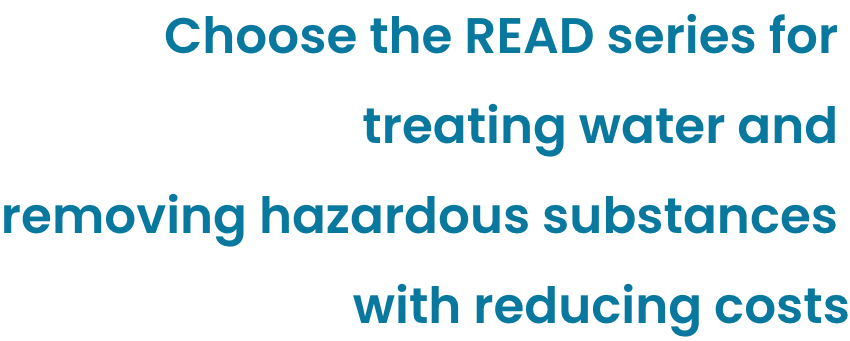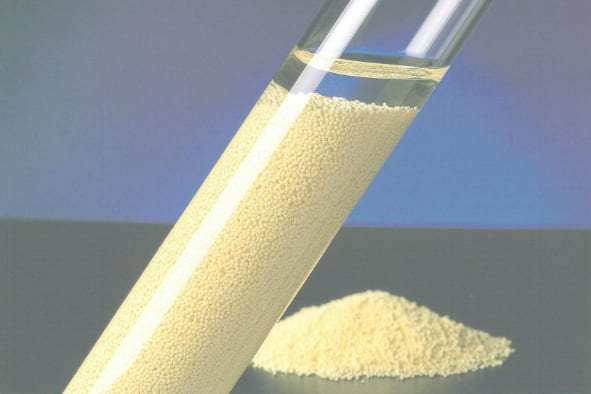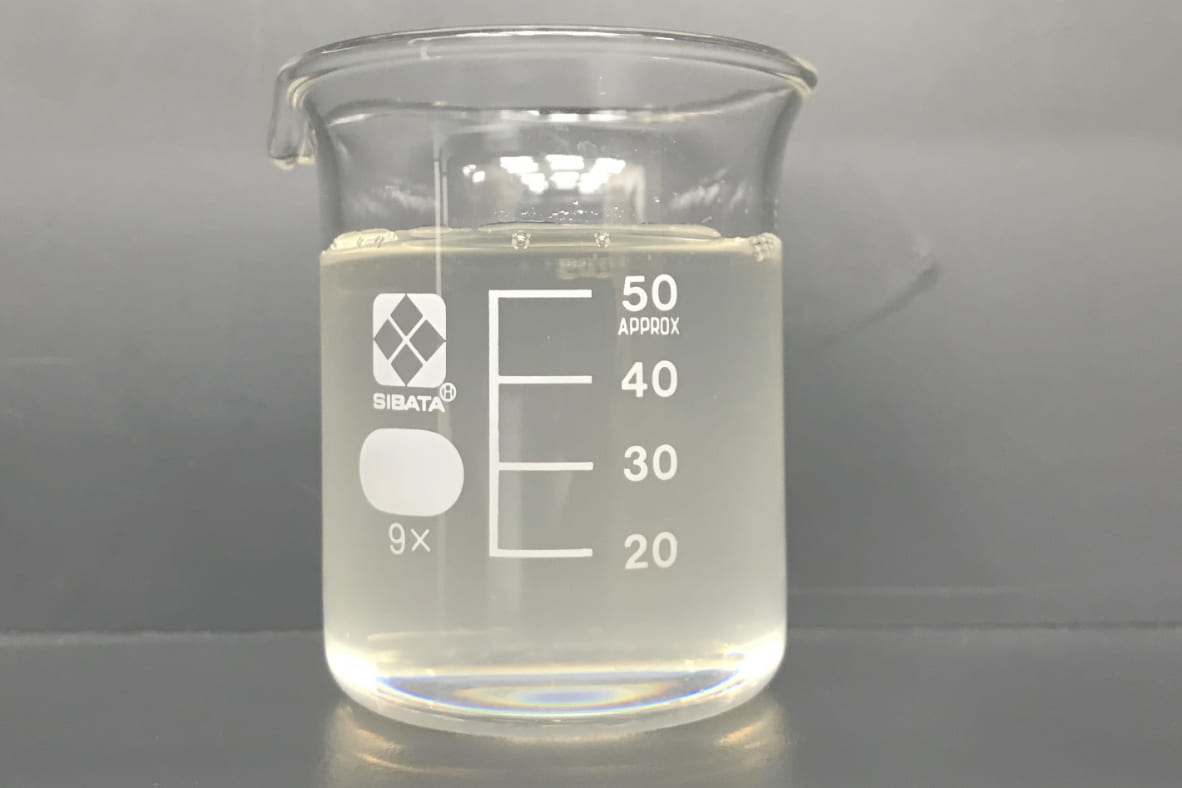
Water treatment is an essential process to produce clean water
Water treatment refers to purify the water by removing hazardous substances from it.
This is a necessary process for people to live a human life and standards set by the Ministry of the Environment.
The water contains hazardous substances must be treated in an appropriate method for each substance.
Types of water treatment
READ series of adsorbents for water treatment
The product name, READ is an acronym for Rare Earth Adsorbent.
READ series of adsorbents were developed by Air Water Group company, Nihonkaisui Co., Ltd.. There are adapted to different elements and can selectively remove hazardous substances from the targeted water.
Mouseover the illustration for more information.
-
Adsorbents for arsenic:
READ-AsArsenic is carcinogenic and affect the hematopoietic function and immune system. It is also toxic to the liver and kidney. There are some cases that arsenic discharged in wastewater during the manufacturing processes, but also it naturally present in the groundwater and surface water both in Japan and abroad such as China, India and Bangladesh.“READ-As” is highly adsorptive and can be used without pretreatment either in a trivalent or pentavalent form.
-
Adsorbents for boron
READ-B・READ-B(MC)・READ-B(LC)An excessive amount of boron can adversely affect the growth of plants and it is reported as a substance that cause the deterioration of reproductive function or other health problems in the human body if ingested continuously even at a low concentration. These adsorbents are highly selective for boron and are highly effective in treatment.
-
Adsorbents for phosphoric acid:READ-P
Phosphorus is one of the substances that can cause eutrophication. When discharging phosphorous into a river or anywhere else, the applicable standards must be observed.“READ-P” is an adsorbent for phosphoric acid.It is highly selective and has applications such as the removal of phosphorus from plating wastewater.
-
Adsorbents for fluorine
READ-F・READ-F(HG)Fluorine is said to be effective for cavity treatment when used in small quantities. Excessive ingestion of it is shown to induce symptoms such as tooth hypocalcification and osteosclerosis and it could possibly be fatal.These adsorbents are highly adsorptive and have been used for many years.
-
Adsorbents for heavy metals:
READ-HMHeavy metals are hazardous substances that can affect people's health and farm produce.“READ-HM” is used to remove heavy metals such as lead, copper, zinc, cadmium and other heavy metals and has an established history of contributing to the removal of these elements.
Flocculants for water treatment:
READ-CX
Adding “READ-CX” to contaminated water containing boron, fluorine or heavy metals can purify the contaminated water by coagulating and precipitating the hazardous substances.
“READ-CX” has four features.
High processing performance
1. With a high processing performance,
it can be treated in small quantities of chemical and can reduce the amount of sludge.
Easy pH adjustment
3. Since the optimal pH range for treatment is between neutral and weak alkali, adjusting the pH after the treatment is easy or unnecessary.
Handling
2. It is a liquid with good handling properties and can easily be replaced.
Able to treat multiple elements
4. It can be used to treat boron, fluorine, arsenic, selenium, phosphorus, hexavalent chromium, lead and other elements.
Where are they used?
READ series of adsorbents from Air Water Group company,
Nihonkaisui Co., Ltd., are commonly used to treat wastewater
not only from factories and industrial waste treatment
facilities, but for well water and a site of tunnel
excavation where arsenic and other elements are
naturally presents.
Mouseover the illustration
for a larger image.

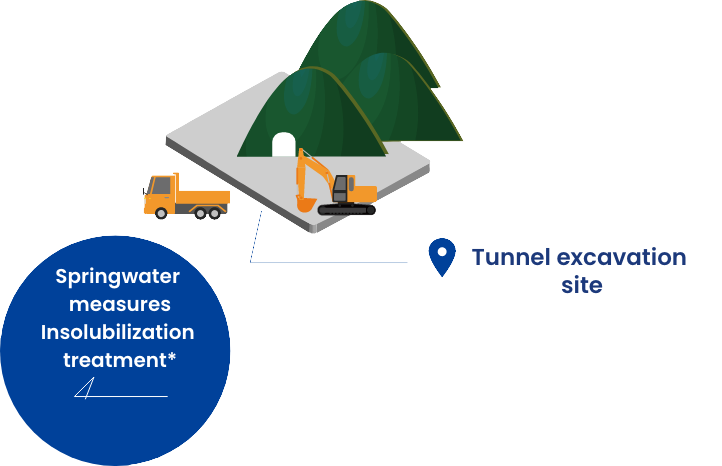
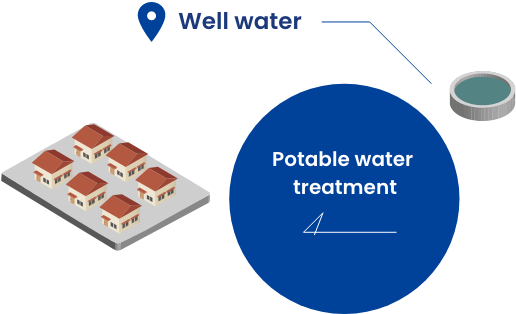
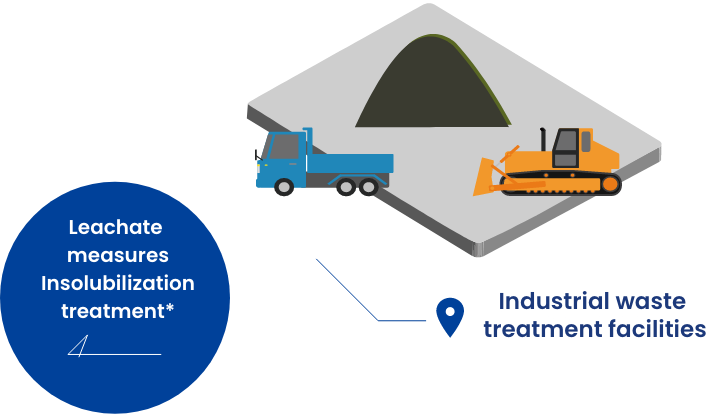
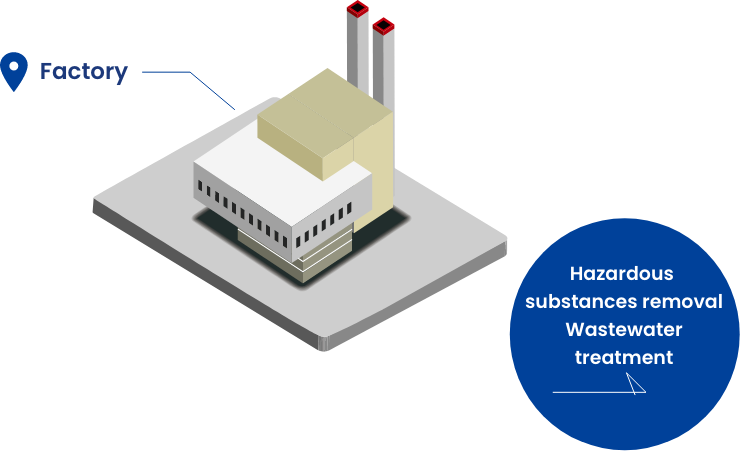
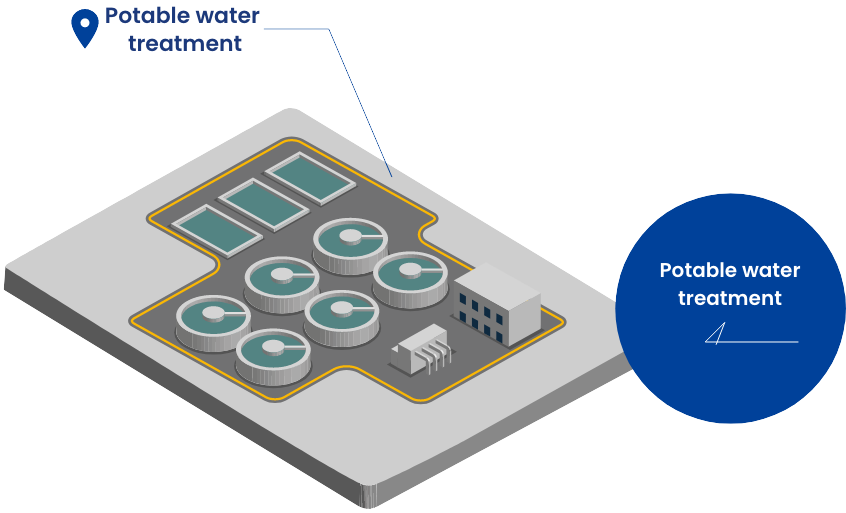
*Water treatment technologies can be used for insolubilization treatment (soil contamination countermeasure).
For more information, please feel free to contact us.
Support for products testing
The product may not perform exactly as designed because of the wastewater to be treated has many different properties.
For this reason, we will conduct a laboratory testing with using actual wastewater and will verify the product's design based on the testing results.
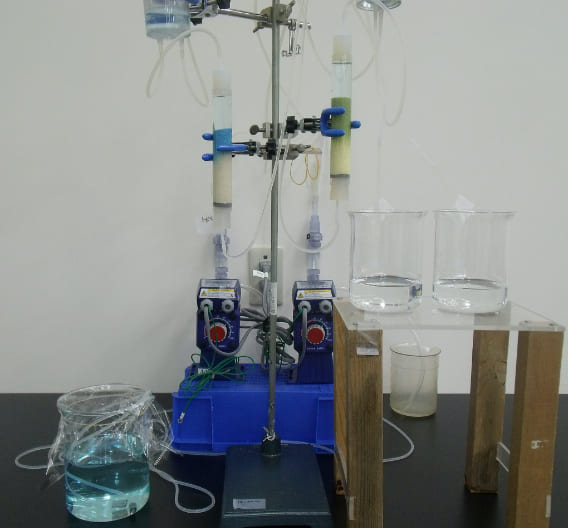
Column percolation test
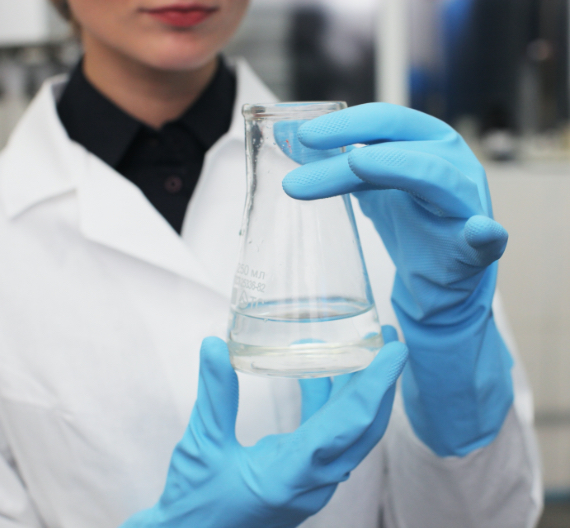
Beaker batch treatment test

Column percolation test

Beaker batch treatment test
Implementation examples
-
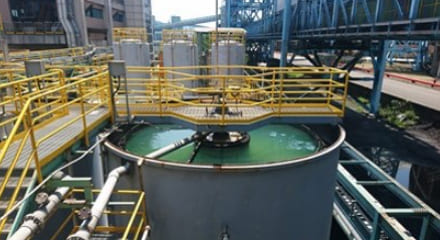
Boron is removed from the desulfurization wastewater of a thermal power station using a flocculant |Explanation of adsorbents
An excessive amount of boron can adversely affect the growth …
-
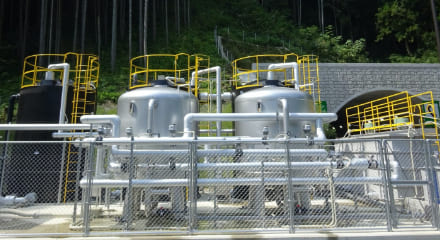
Treatment of detected arsenic from a tunnel springwater by using an adsorbent
Arsenic is carcinogenic and affect the hematopoietic function and immune system. It is also toxic to the liver and kidney. There are …
-
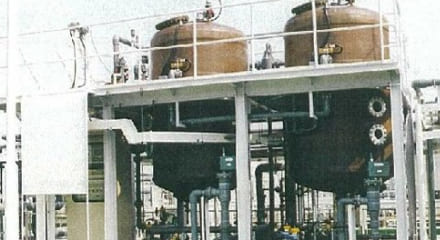
Fluorine in the wastewater from a semiconductor plant is treated with an adsorbent after coagulating sedimentation treatment
It is believed that fluorine is an effective means of preventing cavities …
Do you have a catalog for READ water treatment technology?
We have leaflets and technical documents for each of the elements.Please feel free to ask for it.
Can I have a sample of adsorbent or flocculant?
We will send you a sample after consulting regarding the application of product and treatment outline.
Is it possible to test a product beforehand?
We provide some samples, please contact us if you need it.We can conduct the tests, please feel free to consult us as well.
Can I visit your plant?
If you wish to visit, please feel free to contact us.




